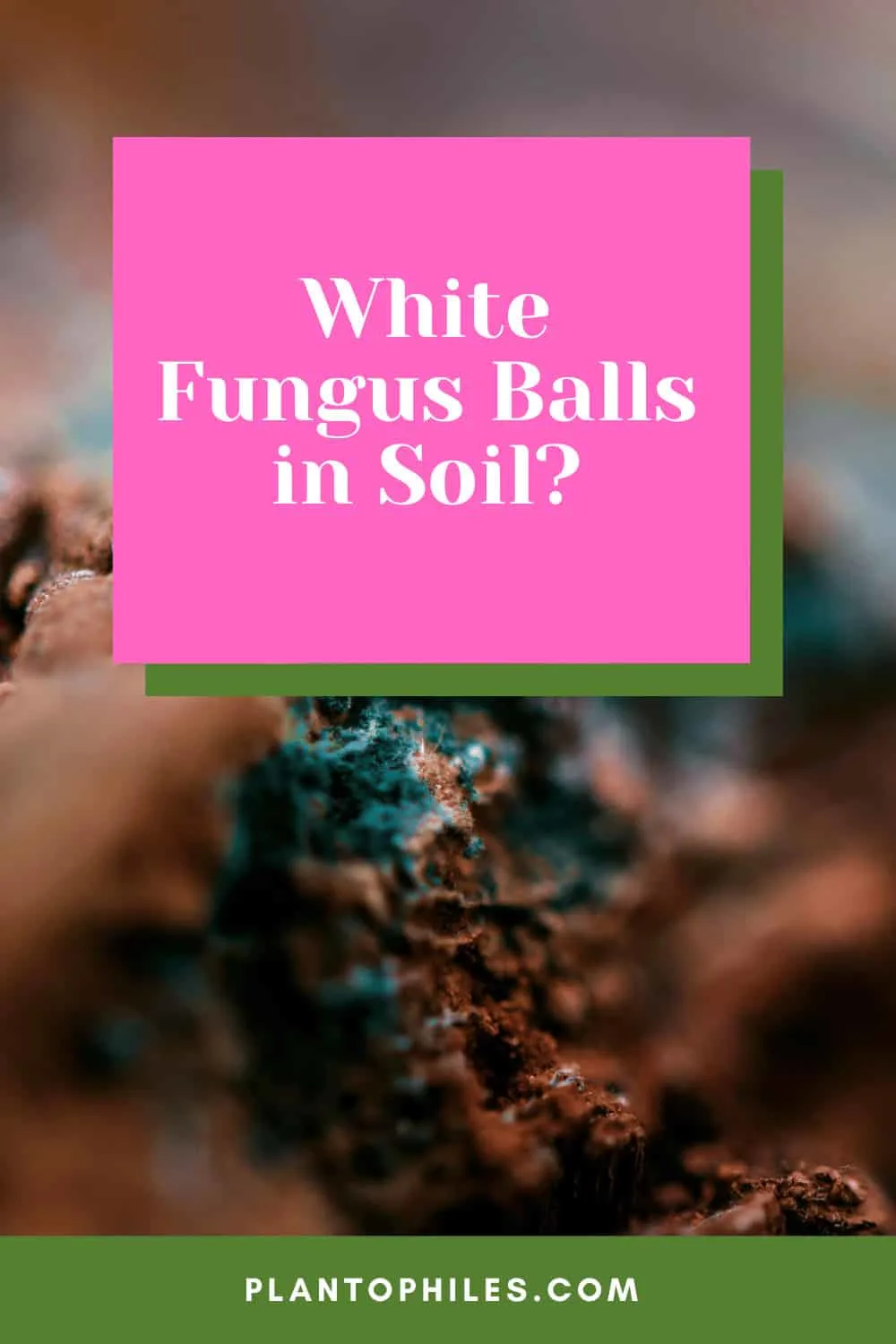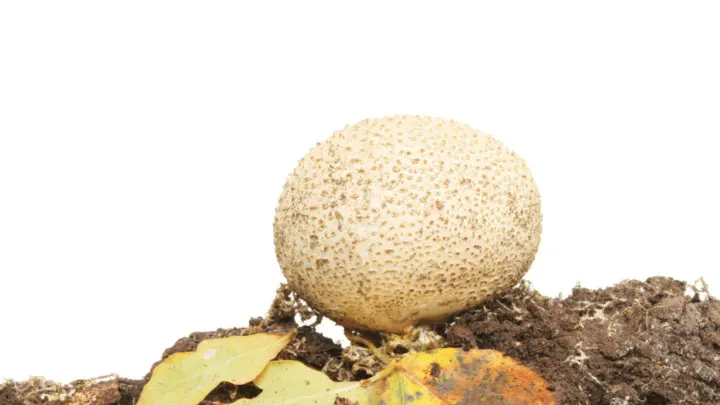White fungus balls in soil, what are they? There is a natural cycle of life between plants, animals, and other microorganisms, and mother nature has it all planned out for all organisms to thrive. Growing plants indoors or in your garden is a different story.
It is no longer nature’s responsibility to provide your plants with all they need to thrive, but it is yours. Along with watering, lighting, fertilizing, and potting, plant owners must watch for anything that might harm their plants—for example, fungi.
Table of Contents
White Fungus Balls in Soil?
White fungus balls in the soil are most often fungal colonies called saprophytic fungi. You might find these white balls in various sizes and textures, such as large puffy balls or clusters of white eggs. The difference in the appearance of fungal balls is due to the different fungi and their respective living conditions. More often than not, fungus balls in the soil are not a cause of concern.

White Fungus Balls in Soil
When Are White Fungus Balls a Cause of Concern?
Although they are mostly nothing to worry about, you should not lay back and relax until you are entirely sure that those white fungus balls will not grow large and engulf your plants.
Fungi, puffballs, molds, and even bacterial colonies can grow vigorously given the right temperature and moisture and might be a grave problem for you and your plants.
Here are some reasons you might spot white fungus balls in your garden soil or pots.
1. Decomposition of Organic Matter
Like fungi start growing on a piece of bread, fungi can also grow on any organic matter in or on the soil.
If you drop a piece of bread or any edible on the soil, a fluffy white growth will emerge over that piece of food and start to decompose it. This is a natural process and seldom does any harm to your plants.
The white fungi thrive in moist soil and die out if you allow the soil to dry out. You shouldn’t be alarmed if the fungi growth is not too close to your plants.
Let the fungi break down the organic matter; they will eventually die out once their job is done.
If you don’t want the fungus to spread, ensure there is no plant debris or other organic matter nearby.
2. White Golfball-Like Fungus Balls
If you find solid white balls below the soil’s surface, this might hint towards a bigger problem. These are bigger fungal growths, as the sizes can range from the size of a sparrow’s egg to as big as a golf ball.
These balls might have root-like structures protruding from their spherical body and are identified as immature fruiting bodies of the stinkhorn fungus. They will easily dry out if taken out of the soil and kept in the open air.
The stinkhorn fungus feeds on decomposed organic matter beneath the soil and is most likely to be found in soil that is kept consistently moist.
Although they cannot harm humans or plants, slimy stalks can grow upwards from the fruiting bodies and spread a putrid odor around your plants. This odor attracts flies and other unwanted insects to your garden.
If you identify a smelly, slimy stalk or encounter these white balls while digging through your garden, you can rake out those balls from the vicinity and get rid of them.
Using other methods to eliminate stinkhorns, such as fungicides or bleach treatment, is not worth it because they are nearly impossible to eradicate from a mulched area.
A better strategy would be just frequently raking out the moist mulched areas in your garden, so the stinkhorn balls are disturbed, not allowing them to grow those smelly stalks.
3. Clusters of Small White Eggs
If you notice clusters of hundreds of tiny white balls on the soil surface, chances are you made the mistake of using uncomposted lawn clippings as mulch.
These white balls look like heaps of white NPK fertilizer or insect eggs. They are not a fungal colony but harmless slime mold.
These white eggs are immature fruiting bodies, just like the stinkhorn fungus. If one of these balls is dissected, we will find spores inside.
Although they do not harm your plants, you might want to keep seedlings and new growth away from fungal growth.
Slime mold carries out the natural decomposing process on the grass clippings. It will naturally climb or grow higher to produce more fruiting bodies.
Conclusion
Fungal growths in white balls are mostly not a threat to your plants, but we still would prefer to have our gardens and pots free of any micro-organisms for hygiene purposes.
Furthermore, any white fungus balls around your garden are poisonous to pets. Hence, it’s better to prevent their growth in the first place.
Fungi thrive in dim-lighted, warm, and moist places. Please water your plants in the bright hours, so no excess moisture sits around longer in the dark hours.
Similarly, frequently rake the mulched areas in your garden to prevent stinkhorns from taking root.
FAQ About Fungus Balls in Soil
Should I use a fungicide to deal with white fungus balls?
Treatment with fungicide is not needed as it is unnecessary as long as the fungal infection is not damaging your plants. Most white fungus balls carry out the decomposition of organic matter, which is actually good for your plants. If you have to, manually removing fungal growths is better than using a fungicide.
How long do white fungus balls live?
Fungal growth will survive and grow for as long as there is something it can feed on. In the case of organic matter, the white fungal growth will wither out in weeks.
White fungus balls in soil are fungal colonies that come in different sizes and textures as various fungi species form round balls.

Daniel has been a plant enthusiast for over 20 years. He owns hundreds of houseplants and prepares for the chili growing seasons yearly with great anticipation. His favorite plants are plant species in the Araceae family, such as Monstera, Philodendron, and Anthurium. He also loves gardening and is growing hot peppers, tomatoes, and many more vegetables.


